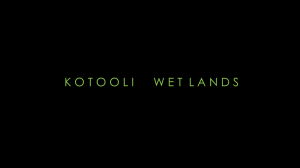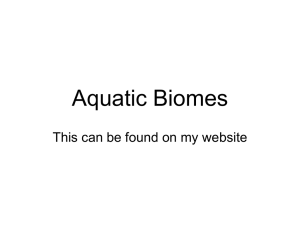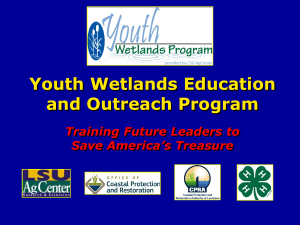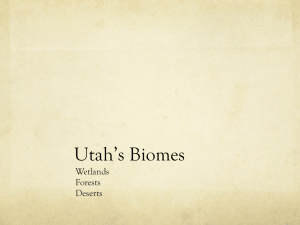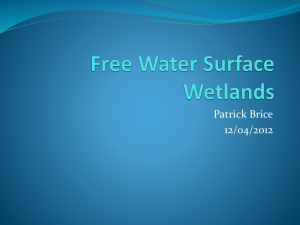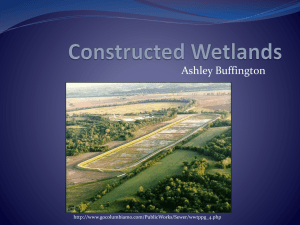SUS presentation - CLT team
advertisement
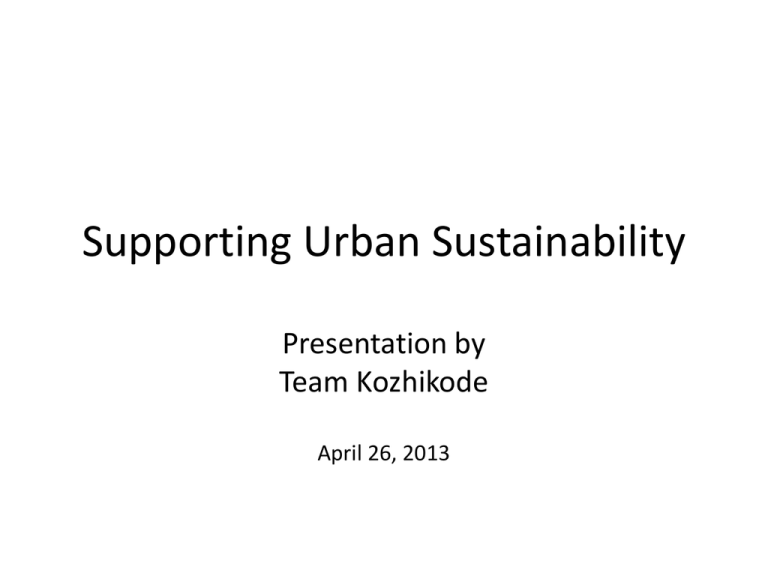
Supporting Urban Sustainability Presentation by Team Kozhikode April 26, 2013 Kozhikode or Calicut: An intro • Historically important – known as the City of Spices – a major trading point for eastern spices since Middle Ages • Arab trade hub since at least 7th century • Capital of an independent kingdom ruled by the Samoothiris (Zamorins) – known as the City of Truth due to the honesty and sincerity of the people • Vasco da Gama landed at Kappad near Kozhikode in 1498, thus opening a trade route between Europe and Malabar • Became capital of Malabar during British times; later colonisers were French and Dutch • Captured by Mysore/Hyder Ali during 1700’s • World famous cotton weaving centre – gave its name to Calico cloth • Famous for its construction of ‘uru’ (Arab trading vessel/dhow) Kozhikode or Calicut: An intro contd…. • Third largest city in Kerala (after Thiruvananthapuram and Kochi) • Population – approx 20 lakhs • 2nd best city in India to reside in (courtesy – economics research firm Indicus Analytics) • 11th among Tier II Indian cities in job creation (ASSOCHAM study) • Premier institutions – IIMK, NIT, Medical College, Calicut University; CWRDM, ZSI, NICD, Centre for Mathematics • Recent developments – 2 IT ‘Cyber Parks’; ports • Malls and other symbols of development coming up Our enquiry question How do we collaborate for effective conservation of Kottuli Wetland and Canoli Canal for the benefit of all? Wetlands • Kerala is blessed with several rivers, lakes, backwaters, besides monsoon rains lasting from 3-5 months • Sadly, maintenance is becoming poor and water bodies are deteriorating • Kottooli is one among the 27 wetlands of National Importance identified for development by the GoI • Canoli (Connolly) Canal, linked to the wetlands is a man made canal running alongside it, constructed in 1848 by the then Malabar Collector H V Connolly. • Kottooli wetlands and Canoli Canal are right in the middle of Kozhikode city A wetland is a land area that is saturated with water, either permanently or seasonally, such that it takes on the characteristics of a distinct ecosystem. Primarily, the factor that distinguishes wetlands from other land forms or water bodies is the characteristic vegetation that is adapted to its unique soil conditions: Wetlands consist primarily of hydric soil, which supports aquatic plants. The Context Kottooli Wetlands • 250 acres in area • Stretch of mangroves • Biodiversity rich: Fauna 20 water birds species 2 species of birds associated with water 3 species of birds associated with water logged weeds 9 species of land birds 11 species of fishes 1 species of prawn 1 crab species Fish Flora 7 mangrove species 2o mangrove associates coconut trees Other common species of trees, bushes, grass, etc. Kottooli Wetlands and Kozhikode • Recharges groundwater aquifers in the city • Is very valuable as source, sink and transformer for various biological, chemical and genetic material • Largest eco patch within the city limits • Maintains city’s ecological balance thru preservation of species and biodiversity • Potential for nature appreciation and environmental learning • Flood control through its link to Canoli Canal Current status of Kottooli • Heavy pollution – from city waste drains, residential zones, hospitals, factories, etc. • Tourist activities – Dream City project/Sarovaram Biopark – construction within wetland area – picnic spots, walkways, etc. – Lack of guidelines for sound, lighting and waste management within the periphery of the biopark – Dumping of waste within the canal and wetlands – Falls under CRZ Zone I but guidelines on construction in the periphery not very clear – Ownership problems – only 100 acres owned by government (that too 4 depts – irrigation, revenue, tourism and social forestry); rest owned by private parties; construction of high rise buildings pose a major threat Current status of Kottooli contd…. • Shrinkage of wetlands due to reclamation • Real estate development activities – several construction companies planning projects here • Recent development: – Permission given for construction of a sewerage treatment plant within the wetlands area – work already started with laying of pipelines – Protests from local residents against this construction as it will mean reclamation Plans for Kottooli Wetlands • A Management Action Plan prepared by CWRDM for conservation of Kottooli with a multi dimensional approach - mangrove afforestation, desilting, pollution abatement, weed control, fishery development, conservation of biodiversity and awareness creation among local inhabitants and city-dwellers on the need for conservation and wise use of the wetland – MoEF has approved this and included the wetlands in the Ecological Regeneration and Conservation Programme • Plan for development of a Contemporary City Open Space by IIA – tourism, recreation and cultural activities while preserving the wetlands and canal – advocates judicious use of the wetlands for public activities while conserving the core area intact Plans for Kottooli Wetlands • Sarovaram Biopark – creation of a nature park with two components - a conservation component of a wetland ecosystem and a recreation component of facilities like amusement and culture park and a food village – this is under way with an open air auditorium, walkway and boating in the canal, picnic spots in the wetland area, etc. already in use • Other initiatives – involving local residents and training them in enterprises like fish farming to ensure protection of the wetlands The Conflict • Environmentalists : Conserve the wetlands as it is; make sure no activities are allowed in the area; this will ensure the wetlands act as the lungs of the city, providing clean air and water • Developmentalists : With the city’s population increasing, prime land in the middle of the city will have to be used for providing housing and other amenities • Middle path followers : Development and use of land cannot be prevented; so preserve the core of the wetlands, identify the area that can be used for development and allow development with strict guidelines for any activity Canoli Canal • • • • • • 11.2 km long man made canal Interlinked with Kottooli wetlands Connects two rivers – Kallayi and Korapuzha Receives tidal influx from both rivers Provides flood control for the city When constructed by the British, envisaged as an alternative transport system to the roads and railways Canoli Canal – Current Status • Heavily polluted due to 12 drainage outlets connected to it at various points – toxic and waste water from hospitals, hotels and residential areas being pumped in; claims that it is treated water but reality is visible • Recent threat from sewerage treatment plan – the treated sewage water will be pumped into the canal; authorities promise the quality of water will be monitored, but …… • Shrinkage of the canal width at various points due to encroachments, collapse of protection walls, etc. • Hope: Recently Directorate of Inland Navigation has approved a plan to revive the canal with desiltation and construction of protection walls with NABARD funding – reached tendering stage. Possible revival of canal as an alternative transport system and/or recreational activity area. SUS Project Steps • Engagement workshop – March 9-10, 2013 • 2 Pre-workshop meetings with representatives of various organisations • Core and advisory teams formed • Data collection – major activity planned before April workshop in Ahmedabad What we found – during data collection • Couldn’t get a good map of the wetlands – existing map more than 12 year old and does not reflect current reality • Many organisations have conducted studies on various aspects of the wetlands – biodiversity, management, water studies, etc – by institutions like CWRDM, IIM, NIT, IIA, govt departments and others • Getting reports and data very difficult especially from govt sources – have to resort to RTI in some cases • Some institutions ready to cooperate with the project (eg IIA) while others are sceptic Next Steps • Get a map of the wetlands prepared • Compile data and information regarding various aspects and current status of wetlands and make it available to stakeholders (eg. Compile list of flora and fauna of the area, water quality studies, etc.) • Team also hopes to clarify some of the next steps at this workshop A heavily polluted part of the wetlands The serenity of the wetlands Buildings by the side of the canal Heavy vegetation by the side of the canal Thank you!
